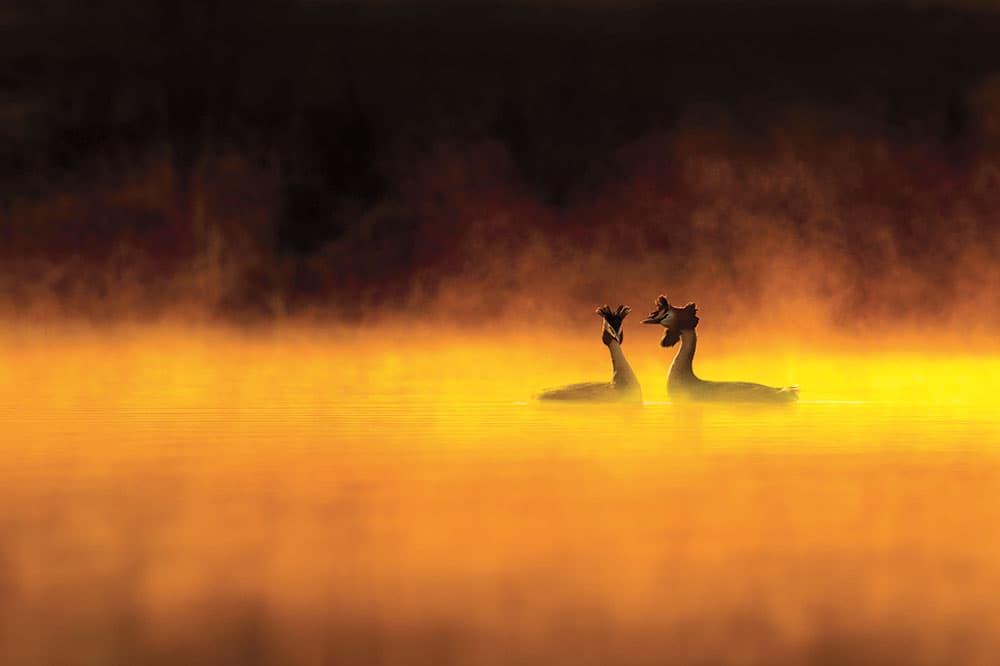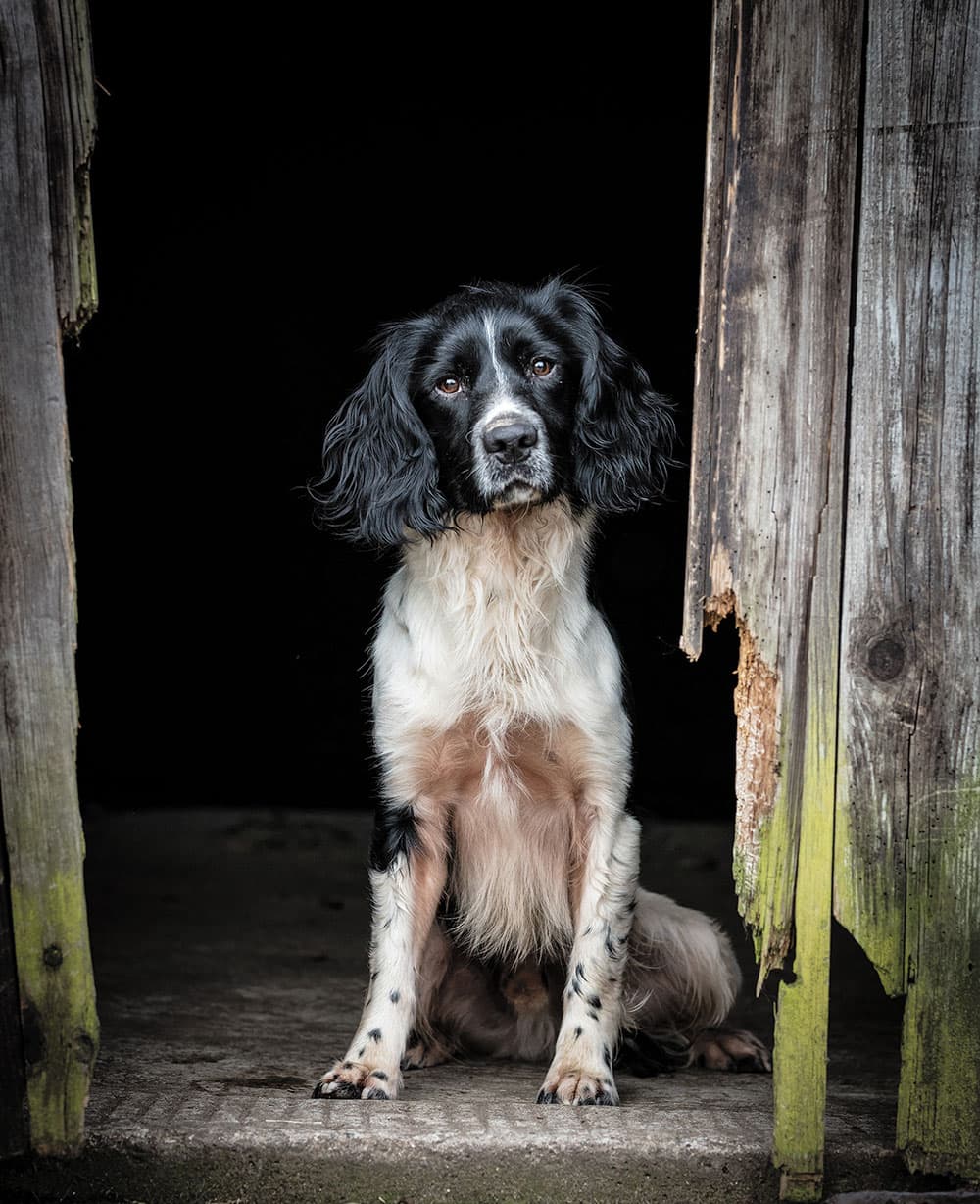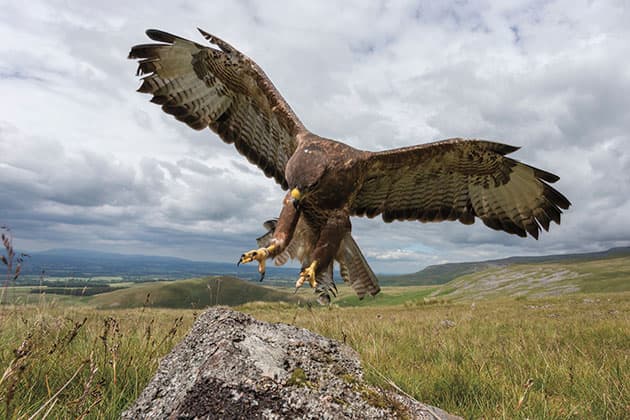
Include background texture to add context. Credit: Mark Sisson
1. Reveal background texture
Mark Sisson
These days, I am increasingly drawn to revealing texture in backgrounds as opposed to reducing the area behind my subject to a classic uniform colour. I still use a shallow depth of field to emphasise the subject, but I include texture to provide a sense of place. This image of a great-spotted woodpecker screams pine forest when you look at it. The subject is small in the frame, allowing plenty of background to be included. There is an out-of-focus tree in the distance, and the light on the pine needles leaves no doubt as to the location. The longer you look at the background, the more it reveals, which takes the image beyond a simple portrait.

Research your subject and their behaviours. Credit: John & Tracy Langley
2. Plan your shoot well
John and Tracy Langley
www.ourwildlifephotography.com
One of the first things to do when planning a photoshoot is to research your subject fully to understand where you might find it and the behaviour it might exhibit. You can use books, the internet, TV documentaries, or you could just spend some time watching them in the field. The knowledge gained from these sources will help you to anticipate their behaviour and allow you to previsualise some of the images you’d like to capture. A good exercise is to create a wishlist of shots, either written down or carried in your head. This will help you to structure your time with the subject, rather than leave you ambling about aimlessly and failing to achieve your goals.

Capture the movement of the tongue flicking. Credit: Jason Steel
3. Capture fast-changing details
Jason Steel
www.jasonsteelwildlifephotography.yolasite.com
The most striking images of snakes often depict the snake’s tongue flickering back and forth. To capture this you’re going to need a fast shutter speed of at least 1/400sec – the faster the speed, the greater your success rate. Shooting image bursts with the camera on high-speed mode will greatly improve your chances of capturing the flickering tongue in perfect position.

Pair of great crested grebes performing courtship display at dawn, surrounded by mist. Credit: Ben Hall
4. Take advantage of the weather
Ben Hall
The courtship behaviour of great crested grebes is regarded as one of the most spectacular sights in British nature and usually begins in March, continuing for a few weeks. These elegant birds are widespread in the UK, being found on lakes, gravel pits, reservoirs and rivers. Observe the birds closely and take note of where the sun is at dawn and dusk. I find dawn the most productive time to photograph them. Not only are they more active, the light is also warm and rich. Follow the weather forecast, as mist will often form on water following a cold and clear night. This provides perfect conditions for backlighting, as the mist lessens the contrast and creates a wonderfully calm and evocative atmosphere.

Owners often want stunning portraits. Credit: Andy Biggar
5. Capture true character
Andy Biggar
Dog photography has changed a great deal in recent years. Instead of action shots of dogs running or jumping, owners tend to want stunning portraits to hang proudly in their homes. All dog owners will see their dog differently, so it’s important that we understand what’s wanted from a picture. For example, the dog may naturally curl its lip, so we might try to get a shot in which the dog’s lip isn’t curled, only to find out that the owner prefers it curled. A clear understanding of what is wanted is important. So make sure that you get a full, detailed brief.

Control over tracking helps capture fast-moving subjects like this buzzard in flight. Credit: Steve & Ann Toon
6. Tweak the parameters
Steve & Ann Toon
Our Canon cameras allow us to tweak ‘Accelerate/Decelerate Tracking’, controlling how the AF handles fast-moving subjects that change speed suddenly. Few of our subjects move at a steady speed, so we set this to +1. The higher setting of +2 is more responsive, but less stable. We leave ‘AF point auto switching’ at 0, as we rarely use multiple focus points. ‘AI-servo image priority’ determines how much time is allowed for focus before the first and subsequent frames are taken. We set this to give maximum emphasis on focus rather than speed, for both first and second images in a burst. Many DSLRs have a range of AF setting ‘recipes’ to choose from – called ‘cases’ on our Canons.







